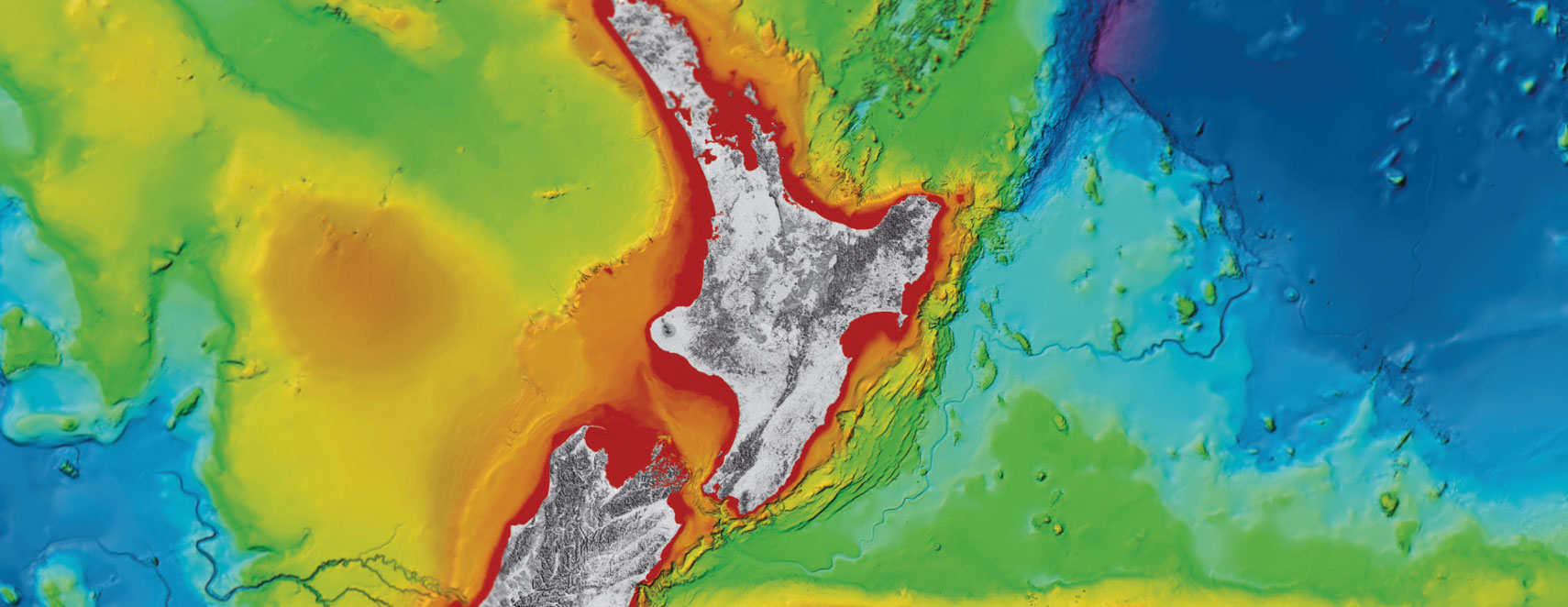
Seafloor methane seeps and submarine landslides
A chance discovery off the Gisborne coast five years ago is prompting a NIWA scientist to find out more about the link between a field of methane seeps bubbling out of the sea floor and submarine landslides.
Marine geologist Dr Joshu Mountjoy was leading a team of scientists that discovered a field of more than 630 methane seeps in 2014 they named the Tuaheni Seep Field. The seeps were contained within a 90 square metre area 40km from Gisborne in depths of about 800m.
While methane seeps are found in other isolated areas around the world, discovering so many so close together in New Zealand waters has presented a unique scientific puzzle. A paper has just been published in the scientific journal Marine Geology outlining the find and calculating the amount of methane the seeps are releasing.
Bubbles from the seeps were measured using underwater video and acoustic echosounders, and then calculations made to determine bubble size and speed and associate that to the amount of gas.
Dr Mountjoy says he is very keen to understand the geological reason behind the focused seepage and the implications of it.
“We don’t quite understand that yet. We have been able to calculate how much methane is coming out of the area and we also suspect the methane is making it to the ocean surface which is quite unusual.” Normally methane exchanges with C02 before it reaches the atmosphere.
Dr Mountjoy says there is a significant underground gas source which is suspected of causing underwater landslides and may be related to deeper fluids in the subduction zone that can in turn influence earthquake behaviour.
“The team published a paper in 2016 showing that the same underground gas reservoir is linked to submarine landslides. A lot of landslides have happened here in the past, so it looks like this gas is a piece in the puzzle of what is going on.”
Dr Mountjoy estimates the seeps have been present for thousands of years. Large carbonate mounds have formed around each one which have in turn created unique ecosystems. They are situated within the Hikurangi Subduction Zone, off the North Island’s east coast, where the Pacific tectonic plate is subducting, or diving beneath, the Australian tectonic plate.
The Hikurangi Subduction Zone is potentially the largest source of earthquake and tsunami hazard in New Zealand and in recent years has been intensely studied by scientists.
Dr Mountjoy says his best hypothesis is that tectonic behaviour in the subduction system is controlling the seeps.
“I think it’s all linked into the seamounts making their way through the subduction zone and potentially even slow slip processes in the area.” Slow slip events are bursts of slow tectonic plate movement that last from weeks to months.
Dr Mountjoy says it is also important to understand how much of the gas is getting through to the atmosphere from a greenhouse gas perspective, and this is one of the next phases of the NIWA-funded project.
“These natural methane sources from the ocean floor are very poorly quantified, so studies like this are important to understand the role they have. It is unlikely this is a major contributor to the green house gas budget but it is part of the puzzle, and these systems can cause local acidification.”
A primary research driver is wanting to understand the role the gas can play in destabilising underwater slopes and causing landslides.
Dr Mountjoy is researching submarine landslides after being awarded a Marsden Fund research grant to gain new insight into how they move. This research will ultimately help determine their tsunami hazard potential.
Disclaimers and Copyright
While every endeavour has been taken by the East Coast Lab Hikurangi Subduction Zone M9 to ensure that the information on this website is
accurate and up to date, East Coast Lab Hikurangi Subduction Zone M9 shall not be liable for any loss suffered through the use, directly or indirectly, of information on this website. Information contained has been assembled in good faith.
Some of the information available in this site is from the New Zealand Public domain and supplied by relevant
government agencies. East Coast Lab Hikurangi Subduction Zone M9 cannot accept any liability for its accuracy or content.
Portions of the information and material on this site, including data, pages, documents, online
graphics and images are protected by copyright, unless specifically notified to the contrary. Externally sourced
information or material is copyright to the respective provider.
© East Coast Lab Hikurangi Subduction Zone M9 - www.eastcoastlab.org.nz / +64 6 835 9200 / info@eastcoastlab.org.nz
